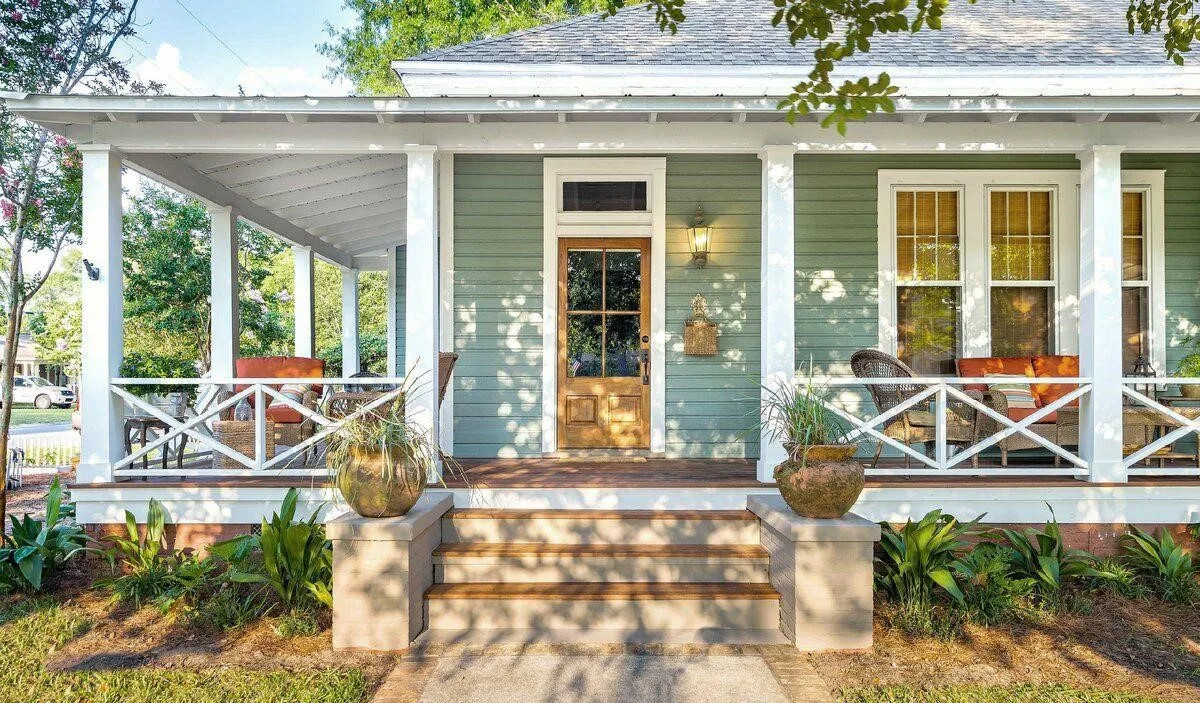Table of Content
- What Are Wooden Wall Panels?
- Types of Wood Paneling
- Comparison
-
Key Benefits of Using Wood Panel
- 1. Aesthetic Appeal and Natural Look
- 2. Enhancing Warmth and Comfort
- 3. Durability and Longevity
- 4. Acoustic and Thermal Insulation
- 5. Easy Installation and Maintenance
- 6. Eco-Friendliness and Sustainability
- 7. Customizable and Adaptable Design Features
- 8. Increasing Property Value
- 9. Health and Well-being Benefits
- Where Can You Use Wooden Wall Panels
- Creative Decoration Ideas with Wooden Wall Panels
- How to Install Wooden Wall Panels
- Choosing the Perfect Wooden Wall Panels
- Conclusion
Imagine walking into a room that instantly feels warm, inviting, and full of character. The walls speak a story of elegance, comfort, and timeless design. This is precisely what wood wall panels bring to your home. Unlike paint or wallpaper, wooden panels provide natural texture, depth, and charm, making interiors feel grounded and cozy. Whether you are redesigning your living room, upgrading your office, or adding sophistication to commercial spaces, understanding the benefits of using wood panels can elevate your interior design to new heights.
Wood is not just a decorative material, it is functional, sustainable, and adaptable. From modern wood paneling designs to traditional textures, wooden wall panels enhance aesthetics while offering thermal insulation, acoustic benefits, and durability. This guide explores the benefits of using wood panel, types of wood paneling, creative applications, and tips for proper installation, helping you make informed choices for your home or office.
What Are Wooden Wall Panels?
Wooden wall panels are decorative panels made from natural wood, veneer, or engineered wood products like MDF. They are widely used in interior design to provide warmth, texture, and functionality. With various wood paneling designs, they can transform plain walls into feature elements, enhancing both aesthetics and utility.
Key features of wooden wall panels include:
- Versatility: Suitable for living rooms, bedrooms, kitchens, offices, and commercial spaces.
- Durability: Resistant to wear and tear when properly maintained.
- Sound and Thermal Insulation: Reduces echo and helps maintain indoor temperature.
- Aesthetic Appeal: Adds depth, natural grain, and texture to walls.
By understanding the benefits of using wood panel, homeowners and designers can achieve a perfect balance of style and function.
Also Read: House Front Elevation Designs The Ultimate Guide for 2025
Types of Wood Paneling
Choosing the right type of wood is crucial for both aesthetics and durability. There are around 1,00,000 wood species globally, but furniture and wall panels mainly use hardwoods, softwoods, and engineered wood.
Hardwoods
.webp)
Hardwoods come from deciduous trees and are denser, stronger, and more durable. They are preferred for longevity and premium furniture.
- Teak: Highly water-resistant, rot-proof, and durable, ideal for outdoor furniture and panels.
- Oak: Durable and strong, suitable for high-traffic areas like living rooms.
- Maple: Light-colored wood with a fine grain, often used for painted panels or furniture.
- Cherry & Mahogany: Reddish-brown wood with grains, perfect for high-end furniture.
- Sheesham (Indian Rosewood): Popular for bed frames and indoor furniture.
Other hardwoods include acacia, rosewood, sal, birch, ash, and deodar, widely used for carved furniture and decorative panels.
Softwoods
.webp)
Softwoods are sourced from coniferous trees and are lighter but less durable than hardwoods. They are cost-effective and mostly used in construction.
- Pine: Affordable and easy to work with; used for budget-friendly furniture and panels.
- Cedar: Durable and fragrant, perfect for cabinets and closets.
- Fir: Strong and suitable for furniture and structural applications.
- Redwood: Resistant to rot, ideal for outdoor furniture and decks.
Engineered Wood
.jpg)
Engineered wood is made from processed timber and wood chips, offering a budget-friendly option for wall panels and furniture backing.
- Veneer: A Thin hardwood layer applied on a substrate, cost-effective and stylish.
- Bamboo: Sustainable, strong, and eco-friendly, commonly used for furniture and flooring.
Selecting the right wood depends on the application, budget, and style. For bed frames, teak, sheesham, and oak are ideal, while for coffee tables or office furniture, pine and engineered wood are suitable.
Comparison
|
Basis |
Hard Wood |
Engineered Wood |
Soft Wood |
|
Definition |
Superlative wood with no hollow spaces, ideal for furniture and panels |
Manufactured using wood strands and adhesives under pressure |
Thin solid wood layer on a cheaper substrate |
|
Quality |
High quality, visually appealing |
Varied quality, less consistent |
Lower quality, mainly decorative |
|
Durability |
Highly durable |
Moderate durability |
Not very durable |
|
Looks |
Elegant, natural grain |
Varied appearance |
Elegant finish when paired with quality wood |
|
Cost |
Expensive |
Affordable |
Economical |
|
Reuse |
Can be reused to make new products |
Conditional reuse |
Hard to reuse |
|
Types |
Teak, Oak, Maple, Mahogany, Walnut |
Cedar, Fir, Pine, Redwood |
Skirting solid board |
Key Benefits of Using Wood Panel
.webp)
1. Aesthetic Appeal and Natural Look
Authentic Wood Texture: Wood wall panels provide a rich, natural texture that paint or wallpaper cannot replicate. They bring warmth and depth, instantly making a room feel more inviting.
Versatile Design Options: From oak and walnut to thermo wood and MDF panels, wooden wall panels come in multiple finishes, colors, and textures, allowing endless interior design possibilities.
2. Enhancing Warmth and Comfort
Natural Warmth: Wood inherently emits warm tones, creating a welcoming environment in living rooms or bedrooms. Its tactile and visual warmth softens sharp lines and complements furniture.
Improved Indoor Air Quality: High-quality wooden panels treated with low-VOC finishes reduce harmful emissions, promoting a healthier indoor environment.
3. Durability and Longevity
Resistance to Wear: Wooden panels are long-lasting and resist scratches, minor impacts, and everyday wear, making them suitable for high-traffic areas.
Aging Gracefully: Wood gains character with time, developing rich color and patina, adding charm to interiors. This long-lasting quality is a key reason why the benefits of using wood panel are widely appreciated.
4. Acoustic and Thermal Insulation
Sound Absorption: Wooden panels naturally absorb sound, reducing echoes and creating a quieter, more comfortable environment.
Also Read: 10 Best Bedroom Lighting Ideas for Indian Homes
Thermal Insulation: Wood helps regulate indoor temperature, retaining warmth in winter and keeping spaces cooler in summer, which reduces energy consumption and utility bills.
5. Easy Installation and Maintenance
Simple Installation: Many panels come pre-finished or with easy mounting systems. Homeowners and professionals can install them quickly without extensive preparation.
Low Maintenance: Wooden wall panels require only occasional dusting and polishing. They resist stains and damage, unlike painted or wallpapered walls.
6. Eco-Friendliness and Sustainability
Sustainable Materials: Many wood panels are sourced responsibly from certified forests, making them an eco-friendly choice.
Carbon Sequestration: Wood naturally stores carbon, reducing the carbon footprint of your home while providing a natural and elegant interior solution.
7. Customizable and Adaptable Design Features
Refinishing Options: Panels can be painted, stained, or refinished to match changing interior styles.
Integration with Decor: Wood panels allow the incorporation of shelves, lighting, or artwork, providing functional and decorative opportunities.
8. Increasing Property Value
Enhanced Resale Value: A well-designed room with wood paneling is attractive to buyers, increasing the property’s aesthetic and financial value.
Timeless Appeal: Wood maintains a classic, timeless look, ensuring your investment continues to look modern across changing trends.
9. Health and Well-being Benefits
Calming Environment: Wood naturally reduces stress and creates a soothing, comfortable space.
Reduction of Toxins: Treated eco-friendly panels are non-toxic, minimizing allergens and promoting a healthier indoor environment.
Where Can You Use Wooden Wall Panels
- Living Rooms: As feature walls or accent panels for a cozy, natural vibe.
- Bedrooms: Perfect for headboards or accent walls, adding elegance.
- Bathrooms: Moisture-resistant panels create a modern, sophisticated look.
- Kitchens: Durable panels withstand daily use while enhancing style.
- Offices & Workspaces: Add warmth and a professional, natural touch.
- Restaurants & Cafes: Creates welcoming, visually appealing spaces.
- Retail Stores: Highlights displays and products with a sleek wooden backdrop.
Creative Decoration Ideas with Wooden Wall Panels
.webp)
- Minimalist Designs: Light-colored panels to open up space.
- Rustic Charm: Dark, textured panels for a countryside feel.
- Industrial Look: Wood combined with metal elements for modern urban aesthetics.
How to Install Wooden Wall Panels
Proper installation ensures durability and a polished finish. Follow these steps:
- Choose Your Panels: Select panels based on design and function.
- Prepare the Wall: Ensure smooth, clean, and dry surfaces.
- Measure and Cut: Accurate measurements for a perfect fit.
- Apply Adhesive/Mounting Tools: Secure panels using appropriate methods.
- Align and Install: Ensure straight, evenly spaced panels for a flawless look.
Also Read: Balcony Makeover Ideas: Transforming Urban Spaces into Elegant Retreats
Choosing the Perfect Wooden Wall Panels
- Material Quality: Opt for high-quality panels for longevity and a polished finish.
- Moisture Resistance: Essential for kitchens, bathrooms, and humid areas.
- Ease of Installation: Choose panels suitable for DIY or professional installation.
Conclusion
The benefits of using wood panel go far beyond aesthetics. Wood panels bring warmth, durability, acoustic and thermal insulation, and health advantages, while enhancing property value. Incorporating the right types of wood paneling, whether hardwood, softwood, or engineered wood, ensures a long-lasting and visually stunning interior. By understanding the advantages and choosing wisely, homeowners and designers can create spaces that are both functional and timeless, making the benefits of using wood panel a truly smart investment.




 (1) (1)_1760011668.webp)





Ans 1. Wood paneling offers aesthetic appeal, insulation, and sound dampening properties, increasing a room's overall comfort and value.
Ans 2. Installation varies depending on the type of paneling, but generally, it's a manageable DIY project with proper tools and preparation. Professional installation is also an option.
Ans 3. No, wood paneling is relatively low-maintenance. Regular dusting and occasional cleaning with a wood-friendly cleaner are usually sufficient.
Ans 4. Yes, well-maintained and aesthetically pleasing wood paneling can enhance your home's interior, making it more attractive to potential buyers.
Ans 5. Yes, especially when sourced from sustainably managed forests. Wood is a renewable resource and can be carbon neutral.